I currently have a RNN model for time series predictions. It uses 3 input features "value", "temperature" and "hour of the day" of the last 96 time steps to predict the next 96 time steps of the feature "value".
Here you can see a schema of it:
and here you have the current code:
#Import modules
import pandas as pd
import numpy as np
import tensorflow as tf
from sklearn.preprocessing import StandardScaler
from sklearn.metrics import mean_squared_error
from tensorflow import keras
# Define the parameters of the RNN and the training
epochs = 1
batch_size = 50
steps_backwards = 96
steps_forward = 96
split_fraction_trainingData = 0.70
split_fraction_validatinData = 0.90
randomSeedNumber = 50
#Read dataset
df = pd.read_csv('C:/Users/Desktop/TestData.csv', sep=';', header=0, low_memory=False, infer_datetime_format=True, parse_dates={'datetime':[0]}, index_col=['datetime'])
# standardize data
data = df.values
indexWithYLabelsInData = 0
data_X = data[:, 0:3]
data_Y = data[:, indexWithYLabelsInData].reshape(-1, 1)
scaler_standardized_X = StandardScaler()
data_X = scaler_standardized_X.fit_transform(data_X)
data_X = pd.DataFrame(data_X)
scaler_standardized_Y = StandardScaler()
data_Y = scaler_standardized_Y.fit_transform(data_Y)
data_Y = pd.DataFrame(data_Y)
# Prepare the input data for the RNN
series_reshaped_X = np.array([data_X[i:i + (steps_backwards+steps_forward)].copy() for i in range(len(data) - (steps_backwards+steps_forward))])
series_reshaped_Y = np.array([data_Y[i:i + (steps_backwards+steps_forward)].copy() for i in range(len(data) - (steps_backwards+steps_forward))])
timeslot_x_train_end = int(len(series_reshaped_X)* split_fraction_trainingData)
timeslot_x_valid_end = int(len(series_reshaped_X)* split_fraction_validatinData)
X_train = series_reshaped_X[:timeslot_x_train_end, :steps_backwards]
X_valid = series_reshaped_X[timeslot_x_train_end:timeslot_x_valid_end, :steps_backwards]
X_test = series_reshaped_X[timeslot_x_valid_end:, :steps_backwards]
Y_train = series_reshaped_Y[:timeslot_x_train_end, steps_backwards:]
Y_valid = series_reshaped_Y[timeslot_x_train_end:timeslot_x_valid_end, steps_backwards:]
Y_test = series_reshaped_Y[timeslot_x_valid_end:, steps_backwards:]
# Build the model and train it
np.random.seed(randomSeedNumber)
tf.random.set_seed(randomSeedNumber)
model = keras.models.Sequential([
keras.layers.SimpleRNN(10, return_sequences=True, input_shape=[None, 3]),
keras.layers.SimpleRNN(10, return_sequences=True),
keras.layers.TimeDistributed(keras.layers.Dense(1))
])
model.compile(loss="mean_squared_error", optimizer="adam", metrics=['mean_absolute_percentage_error'])
history = model.fit(X_train, Y_train, epochs=epochs, batch_size=batch_size, validation_data=(X_valid, Y_valid))
#Predict the test data
Y_pred = model.predict(X_test)
# Inverse the scaling (traInv: transformation inversed)
data_X_traInv = scaler_standardized_X.inverse_transform(data_X)
data_Y_traInv = scaler_standardized_Y.inverse_transform(data_Y)
series_reshaped_X_notTransformed = np.array([data_X_traInv[i:i + (steps_backwards+steps_forward)].copy() for i in range(len(data) - (steps_backwards+steps_forward))])
X_test_notTranformed = series_reshaped_X_notTransformed[timeslot_x_valid_end:, :steps_backwards]
Y_pred_traInv = scaler_standardized_Y.inverse_transform (Y_pred)
Y_test_traInv = scaler_standardized_Y.inverse_transform (Y_test)
# Calculate errors for every time slot of the multiple predictions
abs_diff = np.abs(Y_pred_traInv - Y_test_traInv)
abs_diff_perPredictedSequence = np.zeros((len (Y_test_traInv)))
average_LoadValue_testData_perPredictedSequence = np.zeros((len (Y_test_traInv)))
abs_diff_perPredictedTimeslot_ForEachSequence = np.zeros((len (Y_test_traInv)))
absoluteError_Load_Ratio_allPredictedSequence = np.zeros((len (Y_test_traInv)))
absoluteError_Load_Ratio_allPredictedTimeslots = np.zeros((len (Y_test_traInv)))
mse_perPredictedSequence = np.zeros((len (Y_test_traInv)))
rmse_perPredictedSequence = np.zeros((len(Y_test_traInv)))
for i in range (0, len(Y_test_traInv)):
for j in range (0, len(Y_test_traInv [0])):
abs_diff_perPredictedSequence [i] = abs_diff_perPredictedSequence [i] + abs_diff [i][j]
mse_perPredictedSequence [i] = mean_squared_error(Y_pred_traInv[i] , Y_test_traInv [i] )
rmse_perPredictedSequence [i] = np.sqrt(mse_perPredictedSequence [i])
abs_diff_perPredictedTimeslot_ForEachSequence [i] = abs_diff_perPredictedSequence [i] / len(Y_test_traInv [0])
average_LoadValue_testData_perPredictedSequence [i] = np.mean (Y_test_traInv [i])
absoluteError_Load_Ratio_allPredictedSequence [i] = abs_diff_perPredictedSequence [i] / average_LoadValue_testData_perPredictedSequence [i]
absoluteError_Load_Ratio_allPredictedTimeslots [i] = abs_diff_perPredictedTimeslot_ForEachSequence [i] / average_LoadValue_testData_perPredictedSequence [i]
rmse_average_allPredictictedSequences = np.mean (rmse_perPredictedSequence)
absoluteAverageError_Load_Ratio_allPredictedSequence = np.mean (absoluteError_Load_Ratio_allPredictedSequence)
absoluteAverageError_Load_Ratio_allPredictedTimeslots = np.mean (absoluteError_Load_Ratio_allPredictedTimeslots)
absoluteAverageError_allPredictedSequences = np.mean (abs_diff_perPredictedSequence)
absoluteAverageError_allPredictedTimeslots = np.mean (abs_diff_perPredictedTimeslot_ForEachSequence)
Here you have some test data Download Test Data
So now I actually would like to include not only past values of the features into the prediction but also future values of the features "temperature" and "hour of the day" into the prediction. The future values of the feature "temperature" can for example be taken from an external weather forecasting service and for the feature "hour of the day" the future values are know before (in the test data I have included a "forecast" of the temperature that is not a real forecast; I just randomly changed the values).
This way, I could assume that - for several applications and data - the forecast could be improved.
In a schema it would look like this:

Can anyone tell me, how I can do that in Keras with a RNN (or LSTM)? One way could be to include the future values as independant features as input. But I would like the model to know that the future values of a feature are connected to the past values of a feature.
Reminder: Does anybody have an idea how to do this? I'll highly appreciate every comment.

